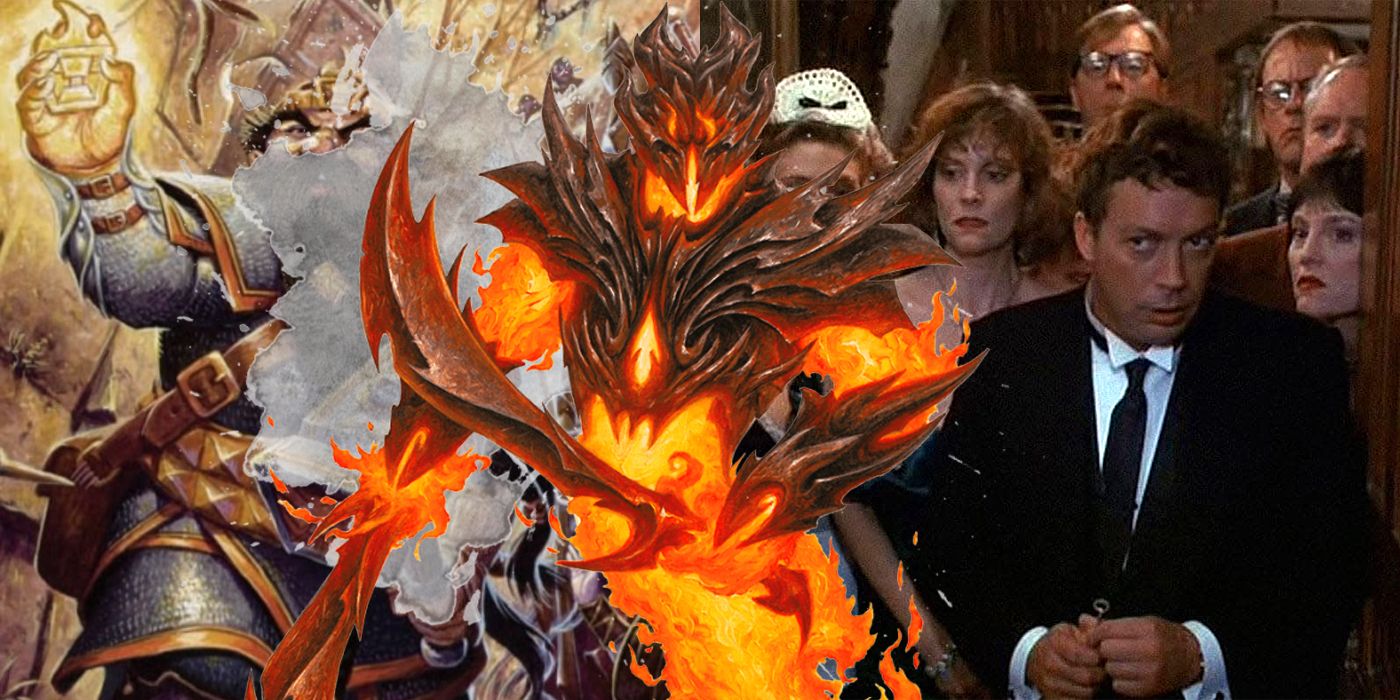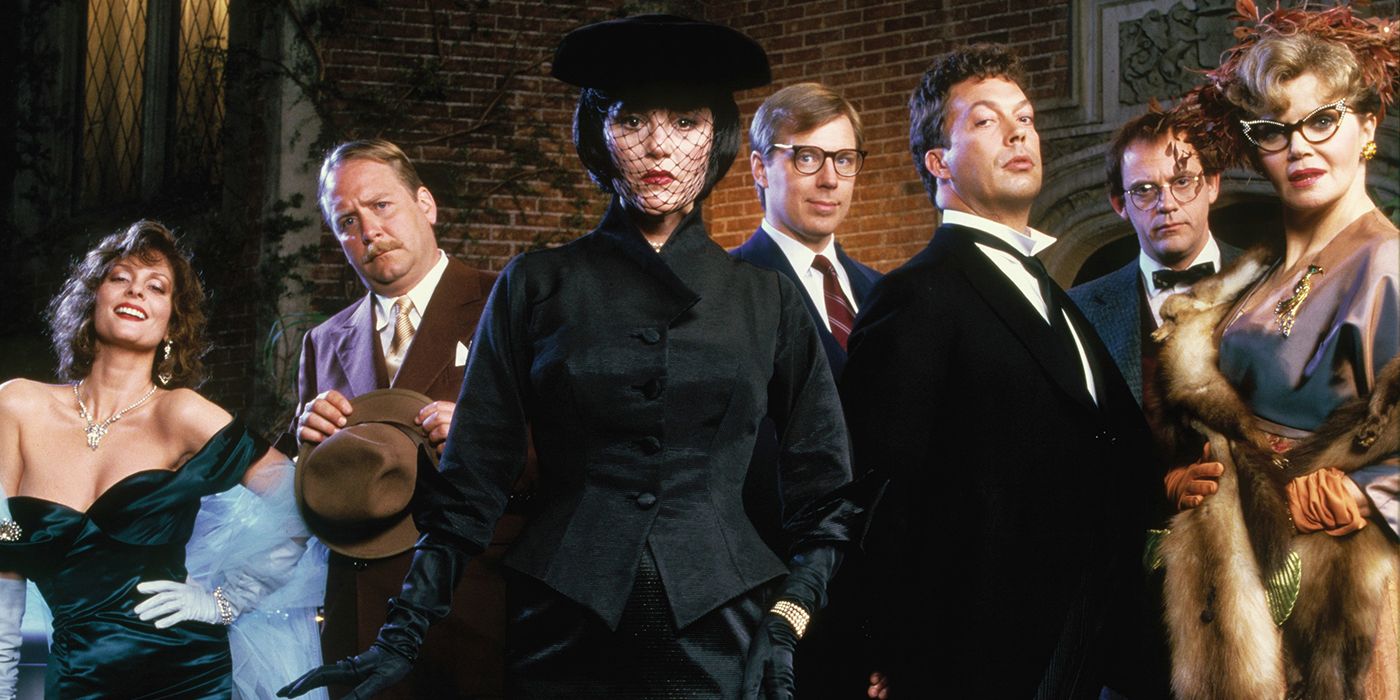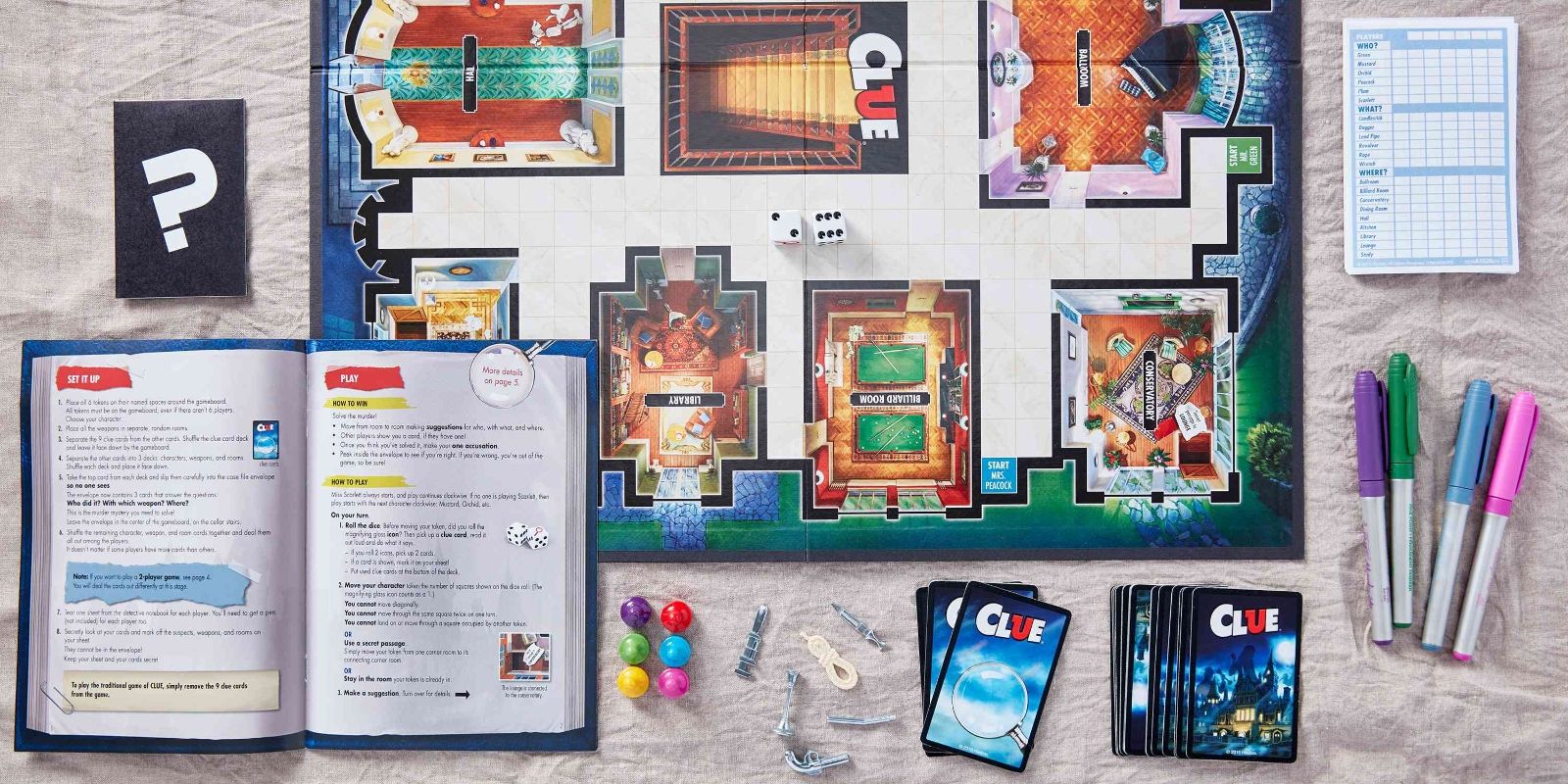The classic board game Clue (or Cluedo) was first published in England in 1943. The game is pretty simple: There’s been a murder in a big house, you have to figure out who was the murderer, what weapon the murderer used and where the murder happened by discovering clues. Dungeons & Dragons fans will immediately recognize the potential here: there’s a board with squares, miniatures you control, dice to move them and a puzzle to solve.
In 2001, USAopoly thought the same, developing a themed version called Clue: Dungeons & Dragons. There are six adventurers, six dungeon-themed rooms and six magical weapons. A new edition was published in 2019 and has become popular due to the increased popularity of tabletop games. However, you don’t really need to buy the game to play.
There are two ways of going about melding Clue and D&D. You can either play Clue and just theme it after D&D, or you can run a D&D one-shot as a DM with elements or themes from the board game or movie. Because it’s pretty easy to make your own Clue game, this guide will focus on the latter.
First, you will need to create the setting for your murder mystery. The classic scenario is a dinner party in a big mansion, which is always fun and easy to pull off, if not a bit simple. You could spice things up by setting the game in a wizard’s tower, a haunted castle or even in the glowing tunnels of the Underdark. You’ll need at least six rooms in total with a space in between them. It will be important that the action happens within a set area, so come up with a good reason for keeping your players in the mansion until the murder is solved. Look at a regular Clue board for help with this.
You’ll also need to craft the overall story: Who is the murderer, who is the victim and what was the motive? Don’t try to make this too complicated. Even the simplest motives can be tricky to uncover, and you risk confusing your players if the ending is too complex. You’ll need to decide whether you want the characters in the mansion when the murder occurs or whether you want them to arrive on the scene afterwards. There’s less that could go wrong for you if they arrive after, but it might be more fun to have them interact with the murderer or victim beforehand.
There should be one murder of an NPC to start things off. This should be something that doesn’t change. Then the rest of the evening will be spent finding out who committed the murder. Any subsequent actions are up to the players.
Make character sheets for your players so you can control the kind of spells and abilities they have. Make sure they’re initially unarmed, so if they want to do combat, they’ll have to use one of the six weapons. To make it fun, assign them themed pseudonyms like they do in the classic board game.
Next, assign each character a secret note at the beginning of play. The notes should contain a secret quest like stealing a valuable artifact from the house or extracting specific information from a character. Make sure these have something to do with being in certain rooms or picking up some of the murder weapons to throw the other players off their scent. Remember that the characters must find out who the murderer is, where the murderer occurred and what weapon they did it with.
The murderer should be a player, but the victim should not be. This means you’ll need a couple extra NPC, like a butler, a maid or a chef. You don’t want a player character to be dead the whole game. On a similar note, if you are going to allow player-to-player combat, it should occur as close to the end of the game as possible. Discuss ground-rules beforehand with your players to make sure no one’s feelings get hurt.
By now, you should have a setting, characters, a murderer, a victim and a motive. Design the rooms more specifically, and design weapons that the murderer or other characters can use. Maybe your mansion takes up several floors and requires secret doors to get to different rooms. Maybe, the mansion’s rooms move randomly during the game. Or maybe someone has set traps for unwanted guests.
As with any D&D session, don’t expect the night to go as you planned. Expect the unexpected and embrace the chaos.



